In-Depth Review Of Sigma’s MC-11 Converter
Flexibility. Quality. Range. The current flow of photographic technology is turning, though arguably, toward the incredible imaging power packed into mirrorless camera systems. These smaller and lighter camera bodies pack dSLR resolution and ISO performance into housings that are shockingly compact.
Still, many shooters are seemingly reluctant to switch from their tried and true camera systems with justifiable apprehension. The reason? They feel as if they would be starting from scratch; needing to purchase completely new lenses to match their new mirrorless camera systems.
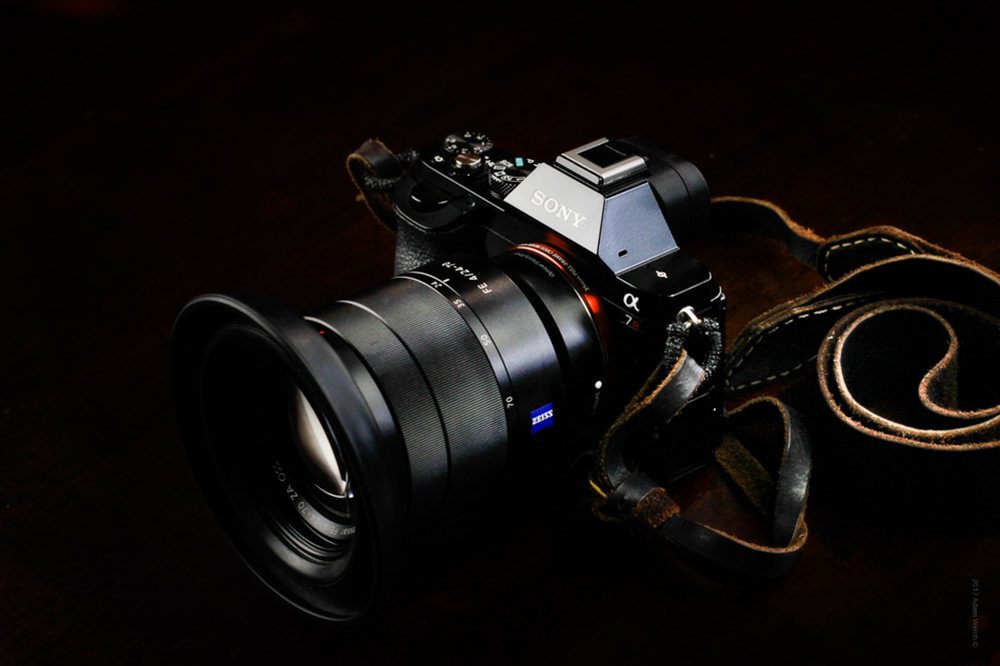
This is not the case. While the technology has been floating around for some time, converters/adapters have now began maturing to the point where virtually any lens system, even those with advanced autofocus and profiles, can be used to full effect with power-punching mirrorless camera set ups. But not all adapters are created equal.
Enter the Sigma MC-11 converter ↓
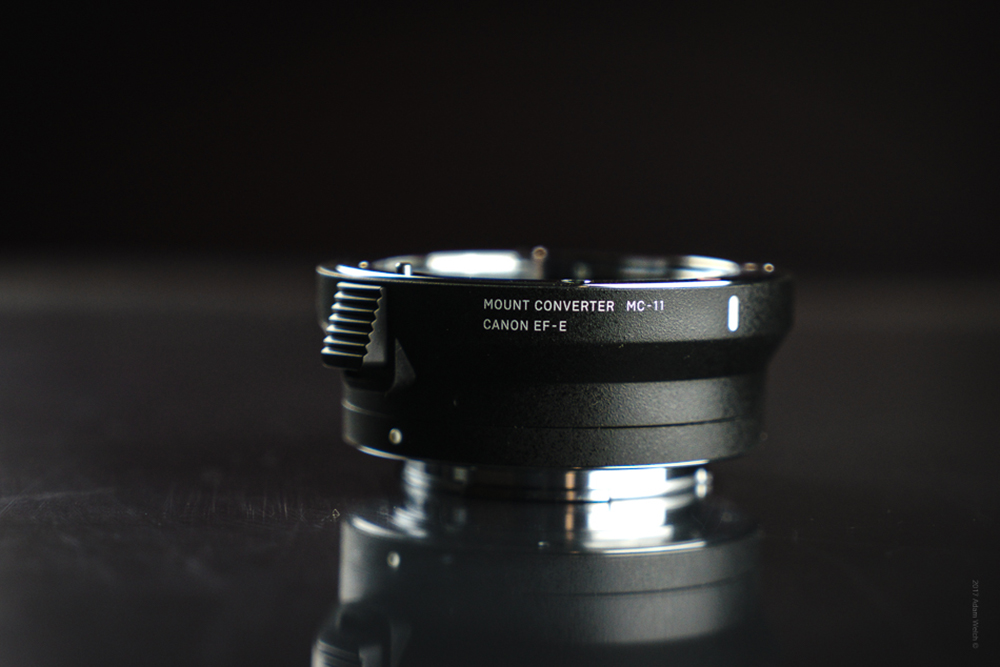
The MC-11 addresses the well established need of many users to adapt their Sigma lenses (currently Canon and Sigma mount only) to be used with Sony E-Mount cameras. The MC-11 has been long anticipated by those who have made the jump to Sony mirrorless camera systems such as the α7 series as well as NEX, α5000, and α6000 series . You may be asking, “will this adapter work with lenses other than Sigma?”… well, not officially according to Sigma. Don’t worry. We’ll talk more about that shortly.
Before we get into the performance of the MC-11 (which proved impressive) let’s have a look at some of the features which make the MC-11 a welcomed addition to the lens converter scene.
Construction Quality and Features
Construction of the MC-11 adapter is, in a word, beautifully utilitarian. I know that’s two words but one simply would not do. It sports completely metallic construction of what feels to be aluminium.
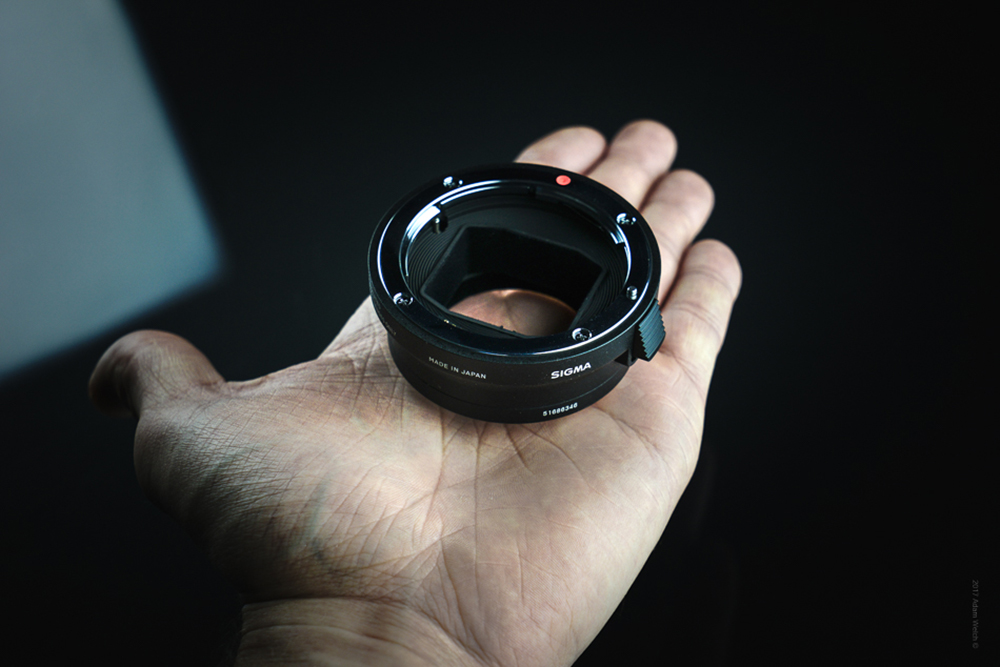
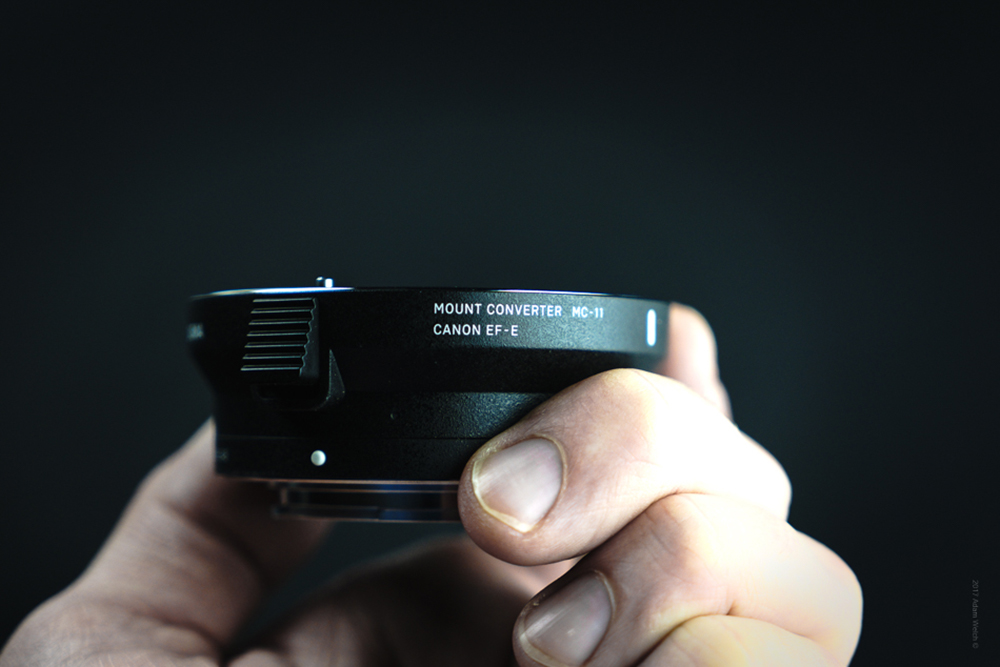
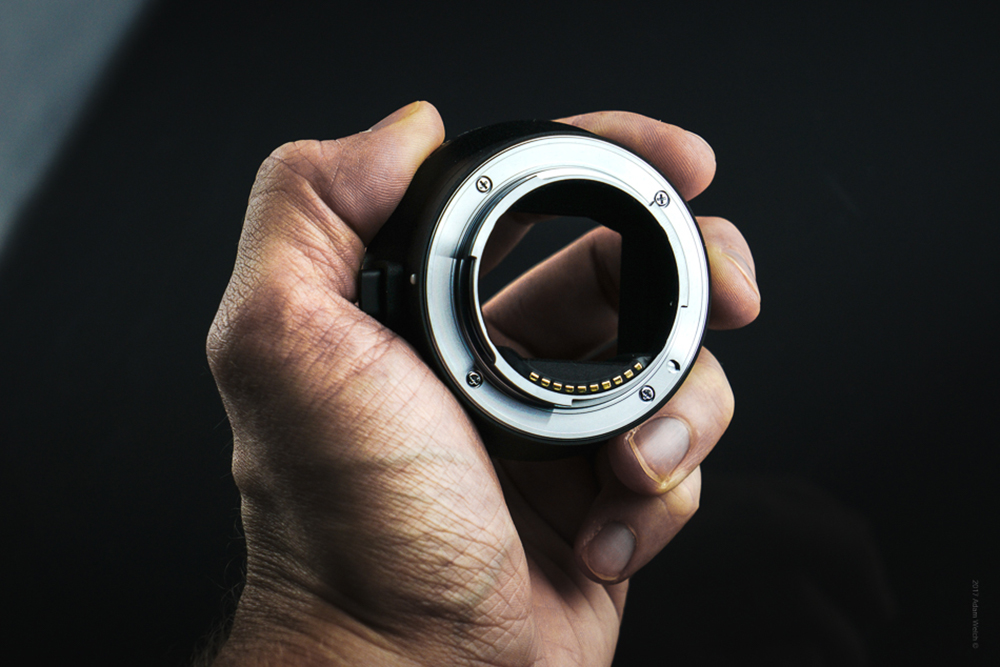
The indicator markings are well done and highly visible. The converter is finished in a heavy duty matte black coating. The forward release switch is aggressively grooved for easy operation. The USB port (more on this later) is weather sealed to keep out all the nasty bits of dirt and moisture that can be encountered in the field.
The converter feels quite solid and mounts very cleanly to the A7R MK1 test camera used for the review. The lens provided by Sigma for testing with the converter is the 24mm f/1.4 DG HSM Art which the adapter also mated to tightly. Aesthetically, the lens and converter matched fantastically.
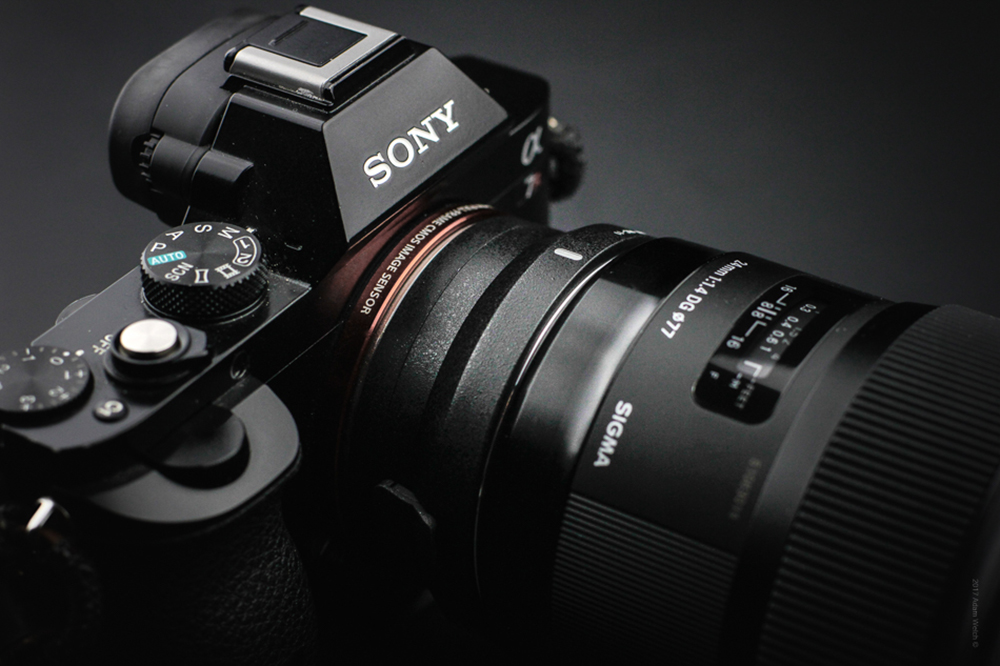
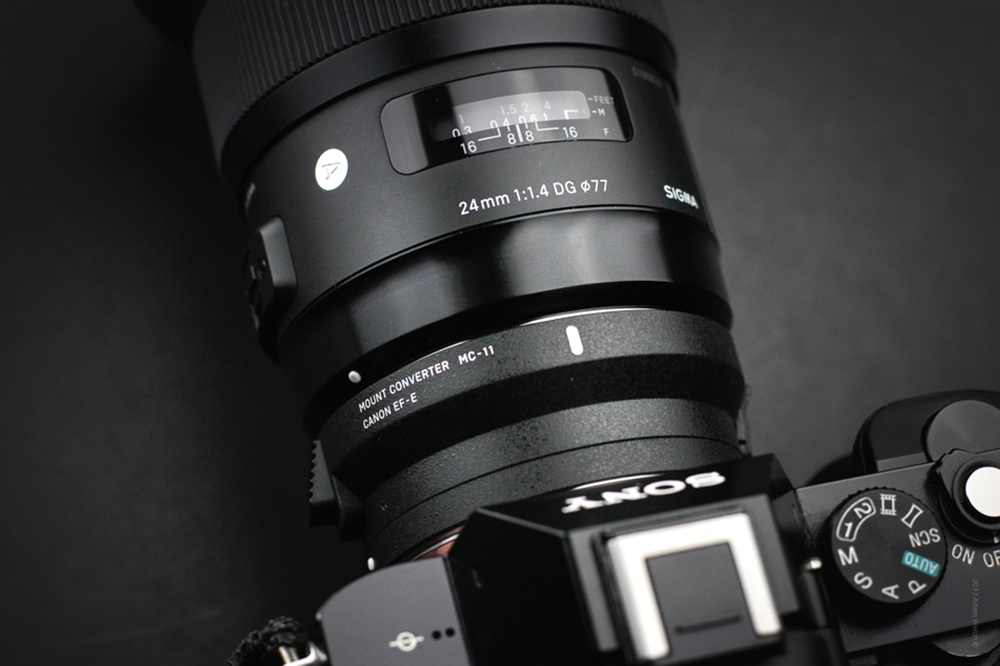
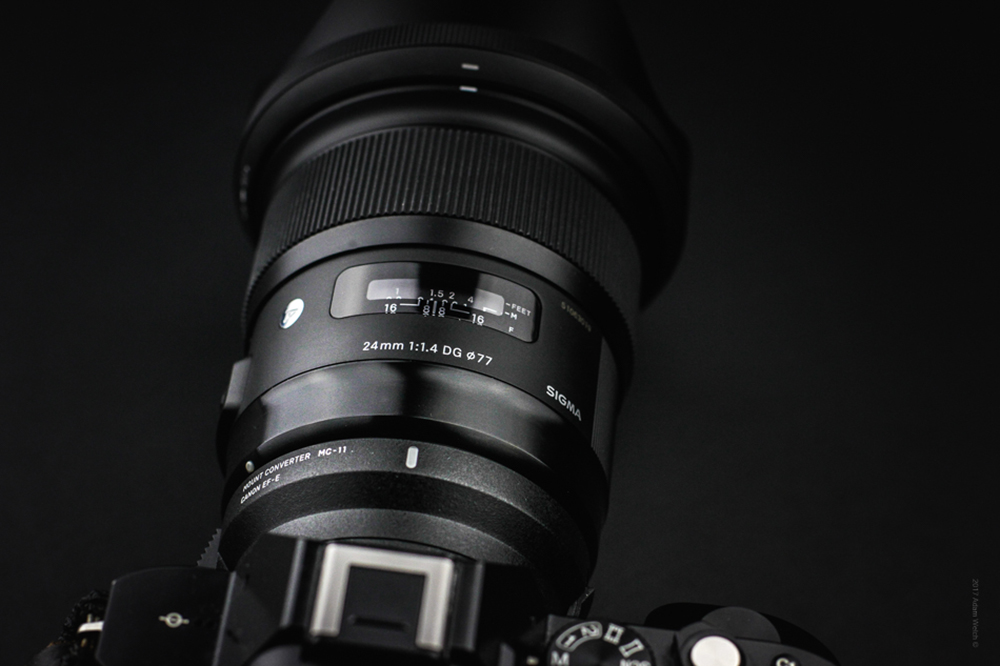
If you are the type of shooter who wanted form to equal function then the MC-11 converter will not disappoint.
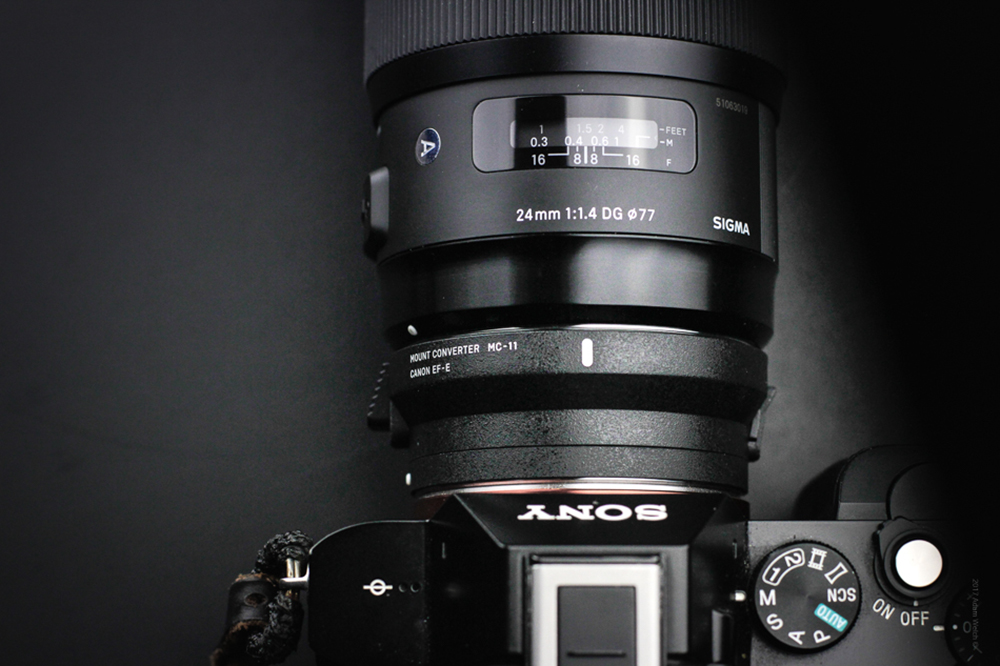
You will notice also that the inside of the converter is carpeted with a black felt material. This is called “flocking” and is present on higher end mount to mount converters. The reason for this flocking is to prevent and internal reflections that sometimes occur from using adapted lenses especially at wide apertures. This is a great feature that I was relieved to find included on the MC-11. Well done, Sigma.
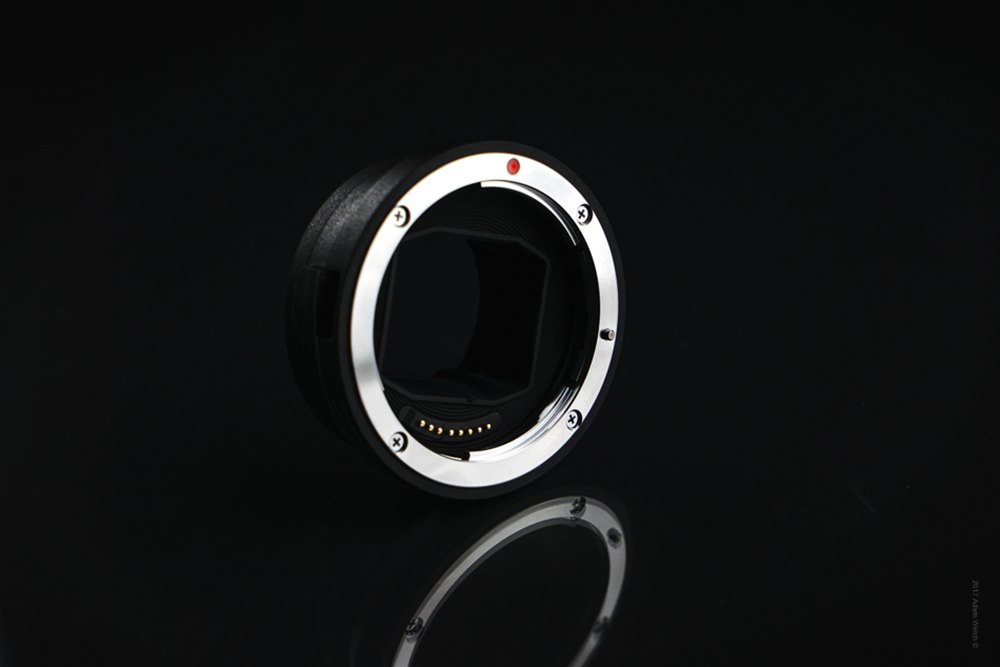
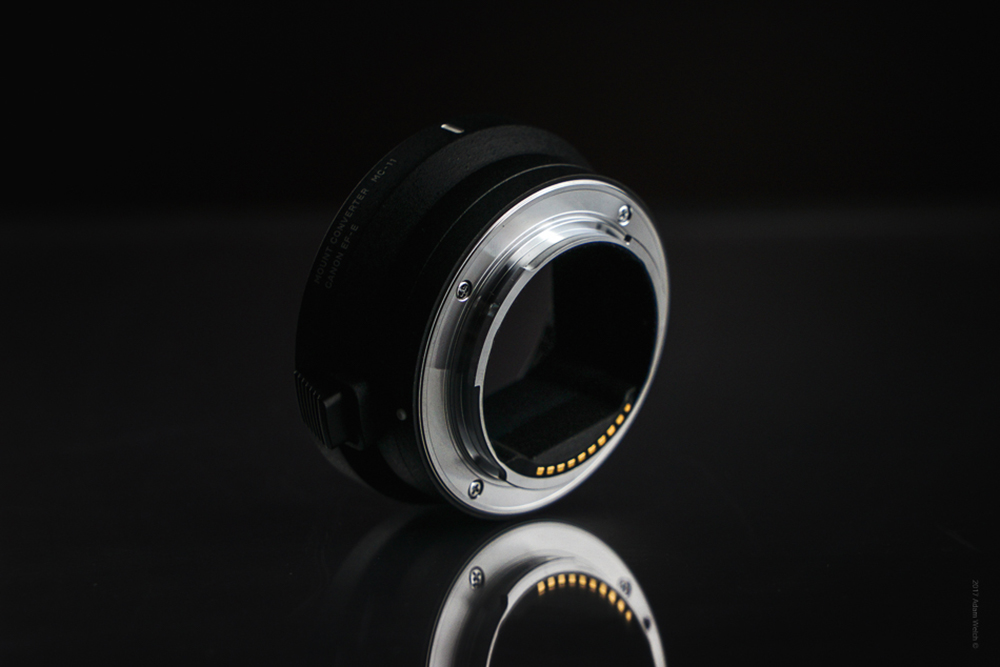
Briefly we mentioned earlier about an interesting feature of the MC-11 and this is the inclusion of a port for connecting the converter to your computer via USB cable (included). This allows the converter’s firmware to be updated as they are released from Sigma. As new lenses become available for use with MC-11 the photographer can grow with the times just by updating the converter’s firmware. The port itself is protected by a fold-back rubber gasket.
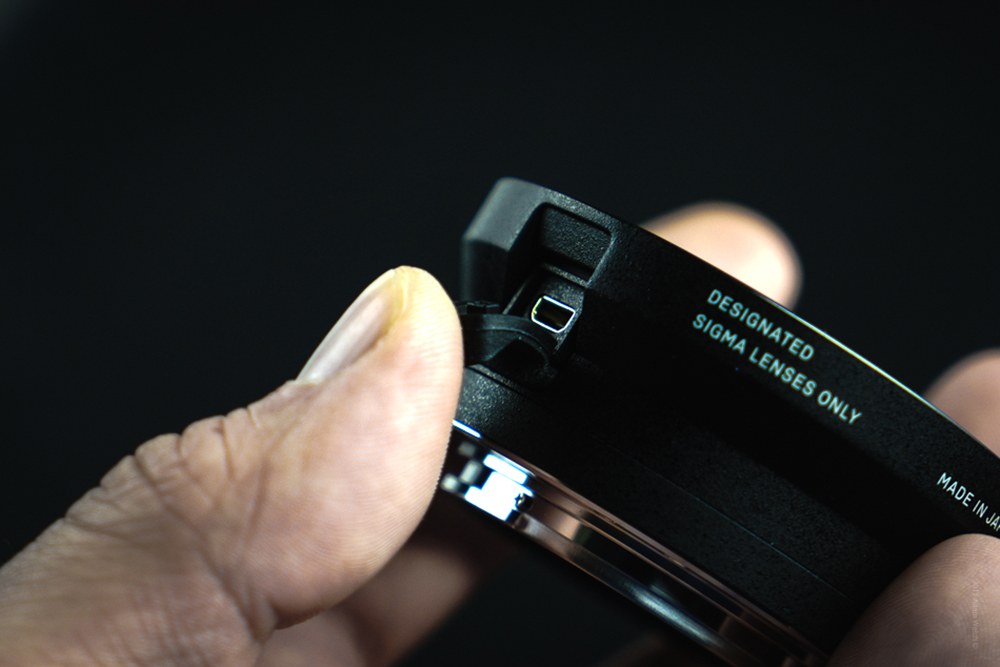
Lens Compatibility
The MC-11 converter of course works with the majority of Sigma’s glass including their Contemporary, Sport, and Art lines of lenses. At the time of this writing there are 22 total lenses which are compatible with the MC-11 and that number continues to grow. As it stands, only Canon EF mounts and Sigma SA Mount versions of the converter are available. Sorry Nikon users.
Here’s a full list of compatible lenses from the Sigma website.
|
35mm full-size (full frame sensor) |
APS-C (cropped sensor) |
|---|---|
|
12-24mm f/4 DG HSM (Art) 24-35mm f/2 DG HSM (Art) 24-105mm f/4 DG OS HSM (Art) 120-300mm f/2.8 DG OS HSM (Sports) 150-600mm f/5-6.3 DG OS HSM (Sports) 150-600mm f/5-6.3 DG OS HSM (Contemporary) 20mm f/1.4 DG HSM (Art) 24mm f/1.4 DG HSM (Art) 35mm f/1.4 DG HSM (Art) 50mm f/1.4 DG HSM (Art) 85mm f/1.4 DG HSM (Art) 500mm f/4 DG OS HSM (Sports) |
17-70mm f/2.8-4 DC MACRO OS HSM(Contemporary) 18-35mm f/1.8 DC HSM (Art) 18-200mm f/3.5-6.3 DC MACRO OS HSM (Contemporary) 18-300mm f/3.5-6.3 DC MACRO OS HSM (Contemporary) 50-100mm f/1.8 DC HSM (Art) 30mm f/1.4 DC HSM (Art) 19mm f/2.8 DN (Art) 30mm f/2.8 DN (Art) 60mm f/2.8 DN (Art) 30mm f/1.4 DC DN (Contemporary)*2 |
Be sure to check this link for continued additions to the list from Sigma as well as accurate information.
A nifty little feature of the MC-11 is the LED indicator light for lens compatibility. There is a small LED light close to the base of the adapter that lets you see if the lens you have attached is compatible with the MC-11 adapters current firmware.
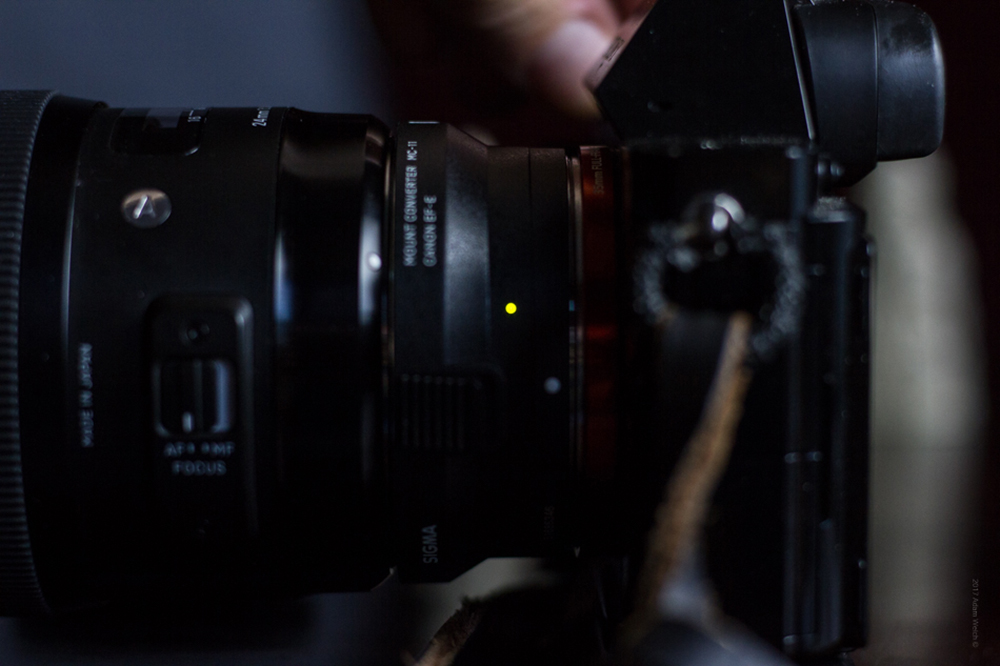
The light’s color and frequency tells you a number of things about the lens you have attached to the converter:
- Green light: The lens is compatible.
- Blinking green light: The lens firmware needs to be updated using the SIGMA USB dock.
- Blinking orange light: The lens is compatible but the MC-11 requires an update to retrieve new lens data.
- No light: You guessed it… the lens is not compatible.
Autofocus Performance and Compatibility
One thing that certainly weighed heavily on my mind before I evaluated the MC-11 was just how well autofocusing would carry over from the lens. Some adapters I’ve used in the past worked great for the price but accurate and reliable AF was always the achilles heel. The MC-11 converter offered alarmingly speedy AF when used in conjunction with the 24mm f/1.4 Art lens (Canon EF).
I was honestly surprised at just how well it performed both in terms of speed and accuracy. Here is a quick video displaying the real-world speed of the AF capability of the MC-11 with the Sony A7R MK1. Focus mode was single shot flexible spot mode “M”.
When it comes to whether or not the MC-11 converter will work with lenses other than those made by Sigma… again, officially the answer is no. In practice however, the verdict upgrades to a strong “maybe”. While it’s true that the MC-11 was engineered to give full functionality to Sigma-made lenses in terms of AF and firmware there is also wiggle room for usage with Canon EF lenses as long as you don’t mind some loss in AF variety and function. Reports range from good to terrible performance when using Canon lenses with the MC-11.
In my test, I mounted a Canon 50mm f/1.4. The lens attached perfectly and communication with the camera seemed to be fine. Using my Sony A7R in full-frame mode, the AF was somewhat lacking. Often the camera would not focus at all. When it did, timing was extremely slow at around three to four seconds until lock. Oddly enough, when I switched the camera to APS-C mode the AF came to life and focused accurately in under one second.
Keep in mind that the LED indicator light did not illuminate when I attached the Canon lens meaning it is completely non-compatible with the firmware of the converter. With that being said, using a Canon lens with the MC-11 is not outside the realm of experimentation. Just proceed with caution.
Now just for fun, here are a few images made using the Sigma MC-11 mount converter with the Sigma 24mm f/1.4 DG HSM Art…



Final Impressions
After using the MC-11 converter there is no doubt that the folks at Sigma have managed to produce a solid piece of gear that can open up a entire new spectrum of lenses to those who use Sony mirrorless cameras. The converter is built like a tank, looks great, and falls onto a happy middle ground between higher priced mount converters. What’s better is that with the addition of the USB port the converter can grow with technology giving it staying power in the photo gear world.
Functionally, the converter performs as advertised and depending on your expectations perhaps even better. The AF speed with my Sigma test lens were great and that was the selling point for this author. This is certainly a converter that I would use daily without hesitation.
You can find the Sigma’s MC-11 converter on Amazon as well as via Sigma’s website.
